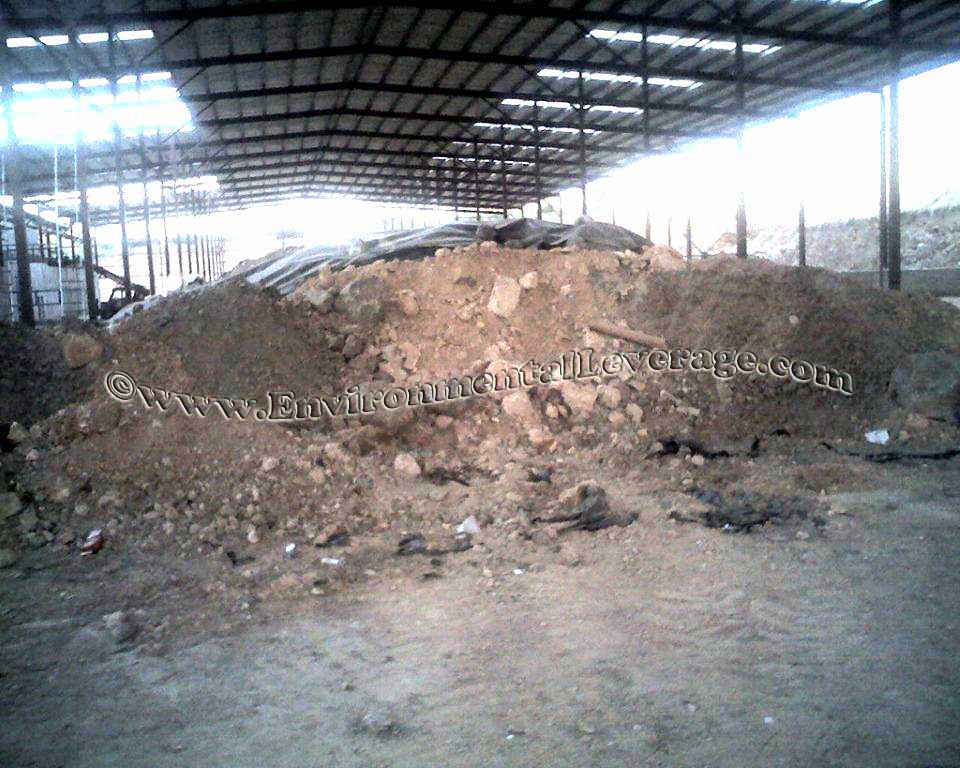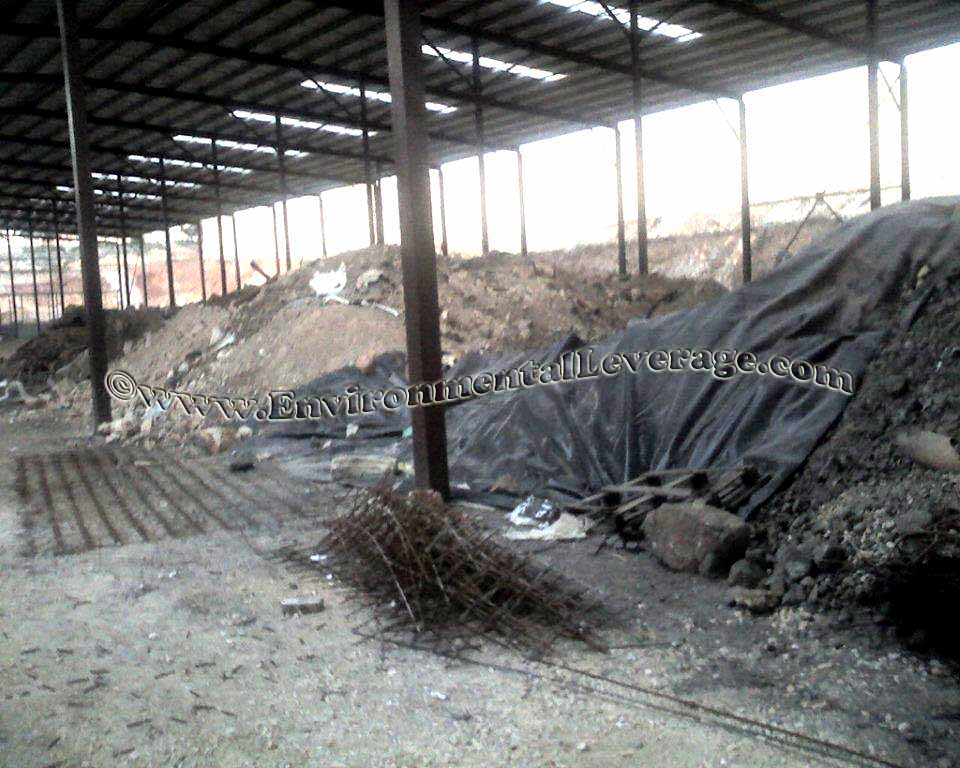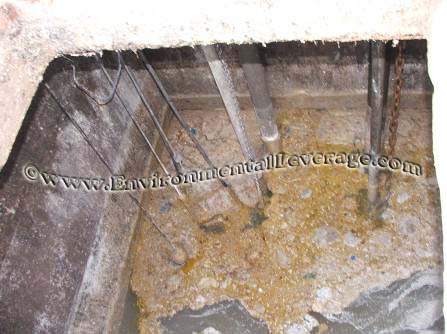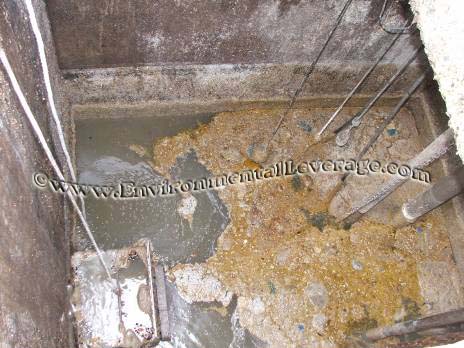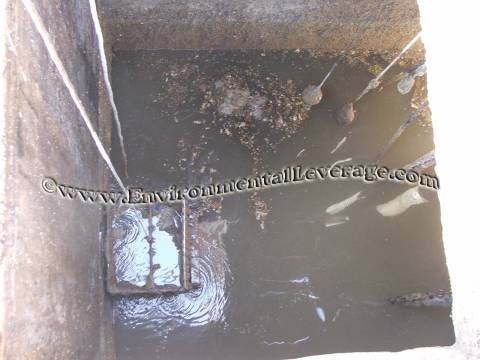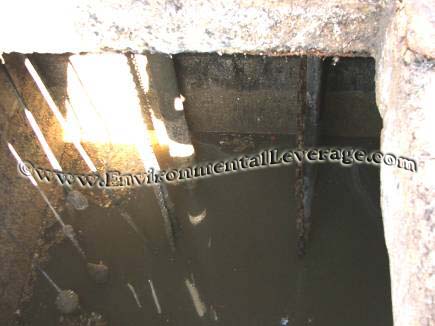Biological Products:
Bioaugmentation products for Wastewater applications in Papermills, Refineries, Chemical, Tanneries, Municipalities, Textiles, Steel, Agriculture, Animal feedlot, Gun Powder plant, Food and Beverage- Dairy Products, Orange Juice factory, Wineries, Cookie factory, Vegetable processing plant, Meat packing, Barbecue Restaurant, Aquaculture, Ornamental Ponds for algae control, CAFO, Nursing homes, Military, Campgrounds, Universities, Regulatory agencies
Lab Services:
Filamentous Identification Lab Service. One reason to identify filaments is to determine the filaments characteristics and then determine the type present. If the type is found out, a root cause can usually be associated with a particular filament. If the cause is known, then a correction can be made to alleviate problems. Chlorination is only a quick fix. Without process changes, filaments will grow back after chlorination. Wastewater Biomass Analyses and Cooling Tower Analyses also available
Training Materials:
Training is an integral part of any job. Not everyone is at the same level of training. Many people want beginning concepts and basics. Some need technical information or troubleshooting. Some want equipment, technology or process information. We have developed a full set of Basic training, Advanced training, Filamentous Identification the Easy Way as well as custom training CD's Manuals. We also provide hands-on training classes and soon will have an Online "E-University".
Audits and Consulting:
At Environmental Leverage® Inc., we have a team of experienced individuals who come into your plant with a fresh pair of eyes. The system is checked from influent to effluent. System optimization, equipment efficiency and operational excellence are key components explored. Key Benefits Equipment efficiency Total Cost of Operation reductions Reliability and safety An onsite audit is conducted to examine system parameters, process controls, and current monitor and control procedures. A physical walk-through is conducted, process flow diagrams are examined, previous design criteria are examined and current standard operating procedures are evaluated along with data logs.
|
Case HistoriesLatest News!
What's New!
We have just added "Virtual Audits" to our capabilities. Check out our new Services. We are in the process of developing new courses for our ""Online E-University" in order to meet the needs of our global customers that cannot travel to our public classes.Visit our new website www.WastewaterElearning.com/Elearning Ponds, Lakes, Canals or River Remediation
with Bioaugmentation Eutrophication: Some algae grow on carbon sources, but many utilize excess N and P.
Decomposing algae consumes a great deal of oxygen, endangering fish
and other aquatic animals. Eutrophication occurs most often in ecosystems
where water is renewed very slowly, such as deep lakes. Untreated sewage and agricultural runoff flowing into a lake or stream
may result in eutrophication. A eutrophic body of water is one rich in
dissolved nutrients, such as phosphates (-PO4-3) from detergents,
fertilizers, and manure. Because of the high concentration of dissolved
nutrients, algae will typically proliferate, die, and sink to the bottom.
Here, their decomposition by bacteria requires a great deal of oxygen - i.e.
the BOD goes up. If oxygen levels drop too low, the oxygen-requiring
organisms, like fish, might be killed. In fact, some eutrophic lakes may
become anaerobic (with all the aerobic life dying) if the BOD becomes too
high. Biological Oxygen Demand is the amount of oxygen needed to degrade the organic matter contained in effluent biologically. The BOD is determined by the level of organic matter in the discharge into a watercourse. If the nutrient level is too high, it results in the bacteria and other micro-organisms expanding rapidly. This depletes the available oxygen supply causing fish and other aquatic organisms to suffocate. What is Chemical Oxygen Demand? A COD test measures all organic carbon with the exception of certain aromatics (benzene, toluene, phenol, etc.) which are not completely oxidized in the reaction. COD is a chemically chelated/thermal oxidation reaction, and therefore, other reduced substances such as sulfides, sulfites, and ferrous iron will also be oxidized and reported as COD. NH3-N (ammonia) will NOT be oxidized as COD. Algae can cause serious problems in ponds if not controlled. They produce large quantities of oxygen during the day but the decay of dying algae demands oxygen in considerable quantities also, resulting in severe oxygen depletion overnight. In conditions of heavy algae infestation aquatic plants become vulnerable to pests and diseases and fish become distressed. Algae can be found growing in ponds, lakes, in clarifiers, de-chlorination tanks, etc. More than 10,000 living diatom species are known, there are over 8,000 species of Algae, there are 1500 species of Blue Green algae or Cyanobacteria, there are 6000 species of red algae or Rhodophyta . . the list goes on and on- ok, so identification is not as important as why is it growing, how it impacts my plant and how to get rid of it! With Summer time here, and lots of plants, ornamental ponds, lakes and lagoons having difficulties with Algae control, we are going to put together a few pages on our website on plants and their issues. Then we will put together the types of algae that can be found as an FYI, because in reality, most of the algae that are growing in your plant, regardless of species, need to be controlled and removed!
Algae Controls and Algae Solutions: There are various different controls depending upon the
type of system, the cause and the location of the algae, maintenance, weir
brushed, sprayers, manual scraping, control of nutrients, biological
products, chlorination, etc..
See our troubleshooting guide for Algae problems. Bioaugmentation in Ponds and Lakes for Algae
Control Many of you have purchased product for algae control in ponds. Here is a way to make your program more active. Algae control in ponds is about a time and numbers game. How much nutrients are there; excess debris like leaves and decaying matter. The bacteria are added to outcompete the algae and duckweed for the nutrients and organics. Rain, run-off, temperature, fallen dead trees and leaves, even wind can impact how sufficient the bacterial program is. You may need to change your dosing schedule after these events! For smaller ponds, sometimes the cost of the biological product can be a bit prohibitive to keep up with heavy rains. One way to cheat is to grow up the product prior to adding to the lagoon. Some paper mills have 40-60 million gallon lagoons, and may use 2-3000 lbs of product a month in the winter time! That can get costly, so we use a "Biofeeder" to get more bang for the buck from the product. Bacteria grow and multiply in 20 minutes to 2 hours! With the proper environment, you can grow up the product, and effectively get more product into the lagoons. We purposely package the products in one lb. water soluble bags so there is no mess or need to have to touch the product, but for cases where more is needed, and the cost is a little prohibitive, there are ways to cheat! Yes, I know I am telling you how to buy less of our products! Our goal is not to make the most money off of you, but to solve your problems! While you are not going to make a huge commercial biofeeder, the concept is the same. Take a 5-10 gallon container with warm water, go get a small fish pump and aerator stone at the local Wal-Mart, Home Depot, etc. and put one lb. of product into the container with the warm water. The pump will mix and aerate the bacteria. Do this for anywhere from 4-8 hours. You will have doubled or tripled the amount of bacteria you are going to add to the pond. Make sure, if possible, to put it in more than one point, or in a spot where there is quite a bit of algae located, near the fountains or aerators you have. Always clean out the container before using again! And no, more time is not better. There is only a limited amount of food and nutrients on the bran carrier that the product is supplied with. We have found that after 18 hours, the activity starts to drop off, so no real gains are made!! Aeration and mixing are also critical. Without these, all the bacteria in the world are going to settle and not reach the edges of the pond where they were not distributed. pH is also critical in a large pond. If you have the ability to impact these variables, the program will be more successful! Good luck and let me know if you have any questions. See additional available file on Biofeeders! Typical control parameters to test and monitor: For small ponds-COD or TOC, N and P values to determine loading demand on
your pond if large enough. Small “fish tank” test kits
can be bought at your local hardware store and these will test N and P
levels very quickly and cheaply. Since this is more a remediation for the
visual purposes more than for regulatory controls and permit requirements,
the results will be good enough to help guide you in your treatment and
evaluation of results. For Large rivers or lakes: Where other sources of runoff or discharges to the river are it is a good
idea to know that the incoming flow contains. Typical tests required are
flow, BOD or COD, TKN, pH and P. If there are oils and
grease, these too should be determined. Bioaugmentation is not very hard or
expensive, it is more an issue of controlling the Critical 5. See newsletter
on Critical 5. Most Rivers or canals if they have a high enough flow that
they get pretty good DO. Usually the program is based upon the amount of
carbons to be removed and the nutrient levels present. A
remediation program can be based upon a closed system with current levels of
contamination, or in some cases where rivers or canals have ongoing upstream
contributions, a short term remediation program along with a long term
maintenance program is required. Mixing and Aeration: These are the two largest things that will speed up any treatment
program. In small ponds that are not very deep and do not have a current
like a lake or river, static water has less Oxygen as well as mixing. The
bacteria need to be able to move around in order to get at the contaminants.
They will settle to the bottom of the pond if not mixed or stirred. Bioaugmentation products that are used: In most cases where low levels of carbon or excess nutrients are present due to runoff, leaves decaying or animal waste, MicroClear® 101 is sufficient to help clean up the contaminants. Click on the Links below for Product Bulletins of each: 1 MicroClear® 101 is a high potency, bacteria layden powdered formulation for controlling algae. 2 MicroClear® AC for Saltwater Ponds, Rivers and Canals with Algae Control. 3 MicroBlock™ is a solid, bacterial laden, brick for use in degrading organics. The safe, naturally occurring bacteria are present in high numbers
to handle difficult organic problems. The unique brick will gradually
dissolve over a 35-120 day period which allows for continuous treatment and
degradation of waste. The naturally occurring bacteria contained in the
block will reduce odor, sludge, fats, oils and grease buildup. This product
can also be placed in rivers, lakes and ponds to remediate.
Soil Remediation Industrial zone Alon Tavor Israel
Starting of the project was on the 04/12/2008.
Metal and large debris was removed, soil was spread out across the land. Lift Station Grease Removal- TEL-AVIV SEWAGE PUMP STATION
2/28/2007 Before Treatment 3/13/2007 After only a couple weeks with bioaugmentation program 1000 Cubic meter a day flow- Used Environmental Leverage MicroBlock- 2 lb size submersed in the station to eat the grease
Here is another lift station before bioaugmentation program and after grease removal bioaugmentation program Environmental Leverage Inc. & E. H. Green Israel Eli- Phone : 00-972-50-6593659
Case History Grease Removal- IsraelPump Station 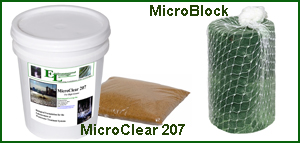 .
Click this link for Product Information .
Click this link for Product Information
February 14th 2007 prior to treatment
February 20th 2007 after treatment This case history with such a great success is from one of our distributors ELI HALPERIN E.H.GREEN PRODUCTS
If you have an activated sludge plant, many times minor process changes coupled with close monitor and control of the biomass can help quicken upset recovery or just increase process efficiency. Not all plants need biological additives. Some just need to improve the "critical 5" parameters.
But some plants have constantly changing influents. No matter how great a control they have, their biomass is in constant flux. Sometimes adding a biological product or micronutrients can help stabilize and increase the efficiency of the biomass.
No matter which bacteria you use, whether you depend on the indigenous bacteria already in your system, or use liquid, dry or solid cultures from Environmental Leverage, all bacteria require a minimum amount of steady conditions we call the "Critical 5 plus One". Bacteria are not Superbugs- they all need these conditions monitored or they will not work correctly.
Environmental Parameters For Biological Activity
Including: PARAMETER
ACCEPTABLE
OPTIMUM Dissolved Oxygen
>0.5 mg/l
1.0 - 2.0 mg/l Temperature
50 - 95° F
77 - 95 ° F pH
7.0 - 9.5
7.0 - 8.0 Ammonia Residual
1.0 - 3.0 mg/l
2.0 - 3.0 mg/l
Bioaugmentation Benefits Key Benefits
Biological Products by Application
**Bioaugmentation Programs include technical support, computer based training and long term programs include occasional complimentary Wastewater Biomass Analyses of your system.Wastewater Biomass Analyses Pdf Document Link
Click On This Link For More information on Products: Biological Products, Descriptions, Usage and ApplicationsCase Histories
Filamentous Identification Training class
Filamentous Identification The Easy Way- Training Program CD
Wastewater Biomass Analyses Brochure
|

